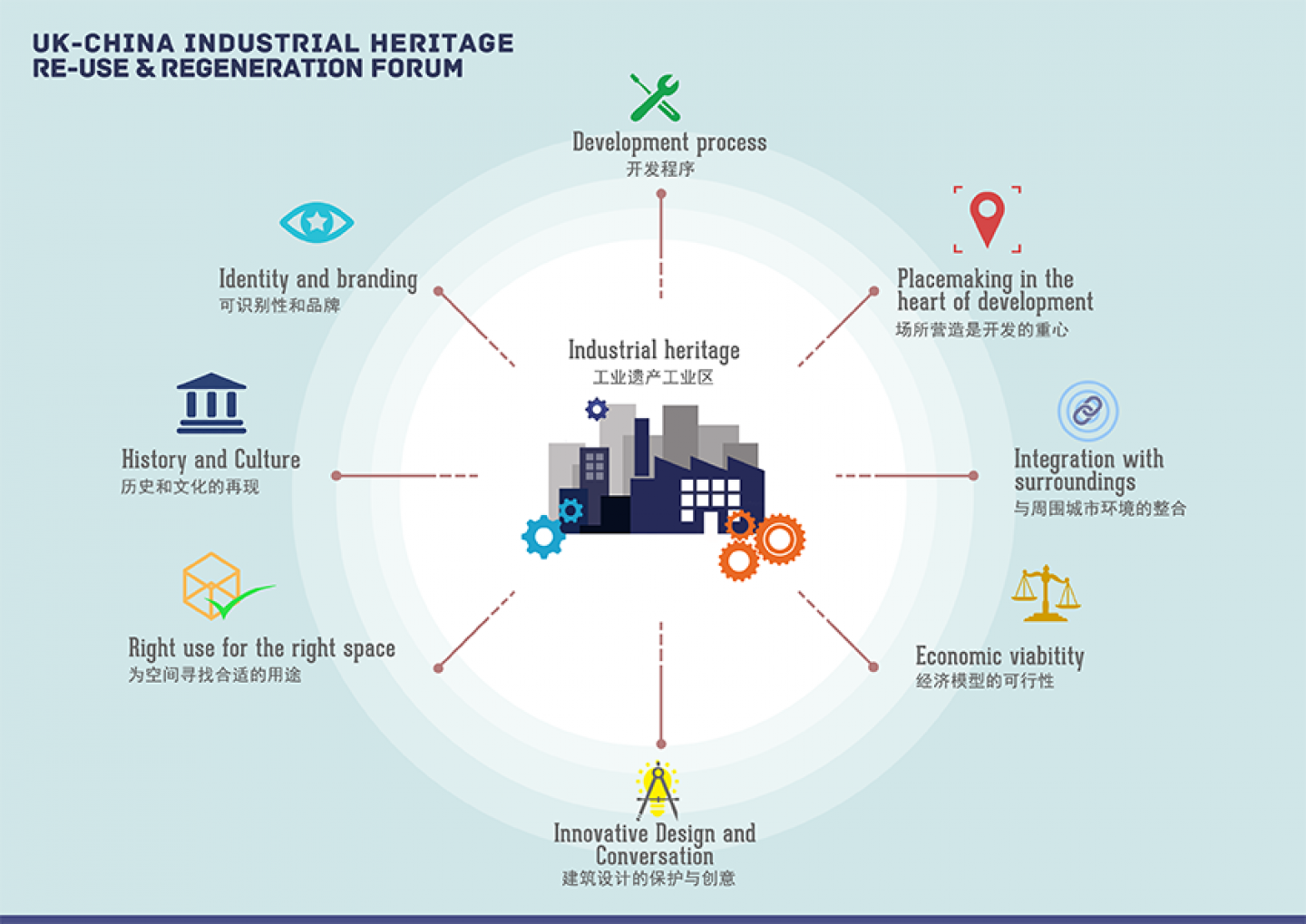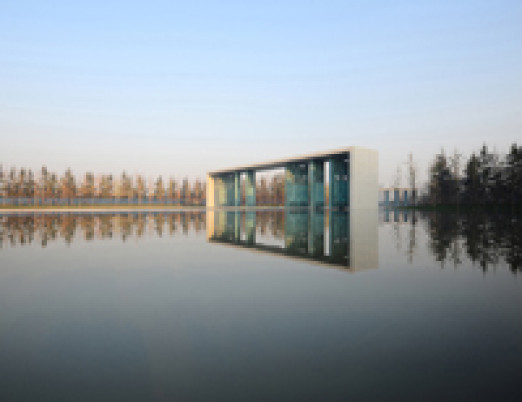The Building Centre hosted the UK-China Industrial Heritage Re-Use and Regeneration Forum where speakers such as the Academy of Urbanism’s Steven Bee, Assistant Dean of Jiangho Architecture School Wei Gu, architect John Tompson, Peter Runacres from Argent and architect Jim Eyre among others, talked the audience through the different strategies and common challenges at play in the UK and China. We’ve summarized five key issues from the day, that developers and architects need to consider when imagining regeneration projects of industrial sites.

(Shanghai Contenporary Art Museum)
1. The Intangible Matter of Timing
Steven Bee, Chairman of the Academy of Urbanism highlighted key considerations in regeneration old industrial buildings. The challenges range from:
· the buildings were designed for specialized processes
· the buildings are often in ‘compromised settings’, not easily accessible
· these buildings left vacant for a long period of time makes for costly restoration and renovation
Yet the fact these buildings are often ‘over-engineered’ gives them long-term durability and their sheer scale means they can be subdivided – such as the Manningham textile mill in Bradford, which was adapted for residential use.
While Bee argued that there is a need to increase public understanding and awareness of the value our industrial heritage, sometimes developments fail. It’s partly due to unrealistic expectations of developers of the time it takes for a return on investment and success is sometimes due to the intangible matter of timing.
2. Understanding Relevant Use
Wei Gu, Assistant Dean of Jiangho Architecture School, Northeast University walked us through the revitalization of northeast China, whose economy was heavy-industry based. She focused in particular on the Tiexi district of Shenyang city (‘China’s Ruhr Valley’) with a population of around one million. The region’s built environment is a result of different chronological waves of military invasion, economic strategy and cultural wars.
During the Japanese invasion in the 1930s Shenyang became an industrial centre, and after liberation at the end of the war, the government made it an industrial base. The Cultural Revolution lead to a shrinking industrial base which eventually re-emerged in the 1980s – however the factories needed re-vitalization. In 2002 Tiexi established a new industrial area in the west of the city. There is also a creative area for mixed use – exhibitions /cafes /businesses.
For Wei Gu thinking through future regeneration demands research around fundamental questions exploring how we define and measure the value of old industrial buildings. Her own research at the university will look at the criteria we use for decisions around what buildings/spaces to preserve, how each building/site finds a relevant use and what processes can direct regeneration.
3. The Value of Participation
John Tompson, Chairman of John Thompson and Partners, reflected on the massive amount of sculptural objects/buildings in China that required new uses. Noting the transformation of cities such as Amsterdam, Barcelona, Copenhagen and Edinburgh which 30 years ago were spaces in decline. Before the car, such cities had a vibrant ‘urban grain’, places for meeting people, doing business, governing, falling in love. The city is a space teeming with life, which is what people have fallen in love with again.
Highlighting the value of participatory placemaking, where professionals work with experts and citizens, Tompson cited the example of the transformation of Caterham Barracks in Surrey which, instead of the standard consultations, involved the community participating in workshops.
The Grade 2 listed building now includes an arts centre, leisure facilities which are a social hub and a highly successful skate park giving rise to the name ‘Skaterham’. One social measure of success is the decrease in petty vandalism in the town. The community spirit which this regenerated building fostered, in which local people had a stake in rethinking and remaking, is demonstrated by an ex-soldier from the barracks, now pub-owner who creates meals on wheels for the community.
4. Creative Attractors
Senior Projects Director at Argent Peter Runacres spoke around the successful regeneration of the King’s Cross area, which had two major attractors.
Firstly, the £2.5 billion transport upgrade at King’s Cross station, turning the station into the most connected transport hub in the UK with national and international links – you can see why businesses want to locate there.
Secondly, there was a much more intangible material in the projects – the students based at Central Saint Martin’s School of Art and Design. CSM’s various locations across London were gathered together in Lewis Cubitt’s restored Victorian granary building, and transit sheds along with a 100m long new building using industrial materials.

Central Saint Martin’s, or rather the life and flow of the 5,000 students and staff – an international mix – leant the patina of invention / inspiration / creativity to the area. Among the many factors in the mix in a successful regeneration, it’s easy to forget how a building or a space connects with other spaces through the resource, movement and flow of people.
5. The Value of Image
While Jim Eyre, Director of Wilkinson Eyre Architects talked the audience through the evolving refurb that is the ‘incredible presence’ of the Giles Gilbert Scott-designed Battersea Power Station in London. Amongst the many architectural and engineering decisions around the Grade II listed building that Eyre took the audience through – including the circular glass lift which will emerge from a chimney – was noting the value of a building’s cultural image.
Eyre cited its use in Christopher Nolan’s 2008 Batman movie The Dark Knight, and the building’s hulking industrial scale has also been used in BBC TVs Sherlock and Doctor Who, but perhaps most famously on Pink Floyd’s Animals sleeve art designed by British studio Hipgnosis.

(Pink Floyd cover Animals, sleeve art by Hipgnosis)
The building’s iconographic aura is a reminder firstly of the sometimes underestimated cultural exchange value of the built environment that has financial value.
And secondly it reminded this attendee of the role played by cultural impresario, the late Tony Wilson in championing the image of Manchester and its industrial heritage, played out in many ways not least in naming the music label he founded – Factory Records. Culture and its unusual materials (like the Central Saint Martin’s students) is as much a key factor mobilizing regeneration as finance, architects, engineers and urban planners.

